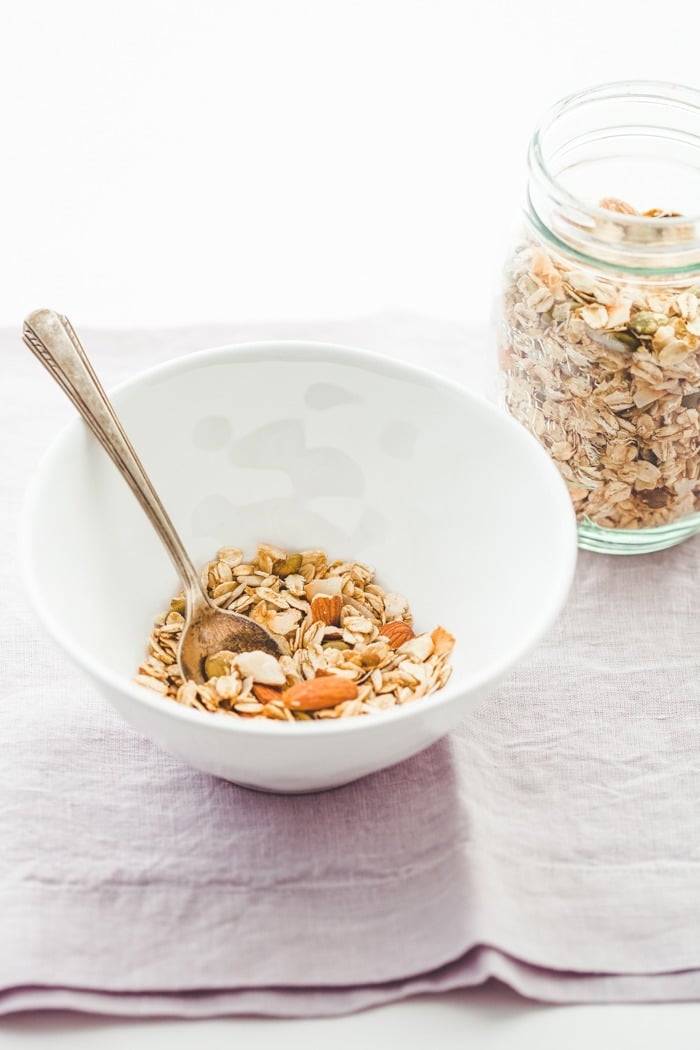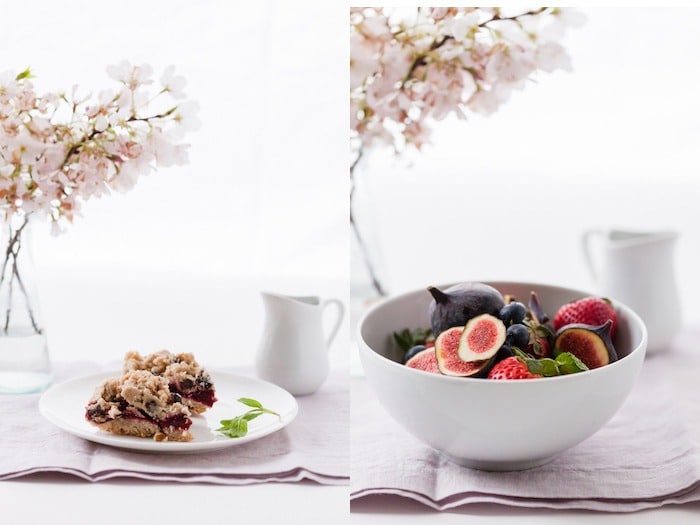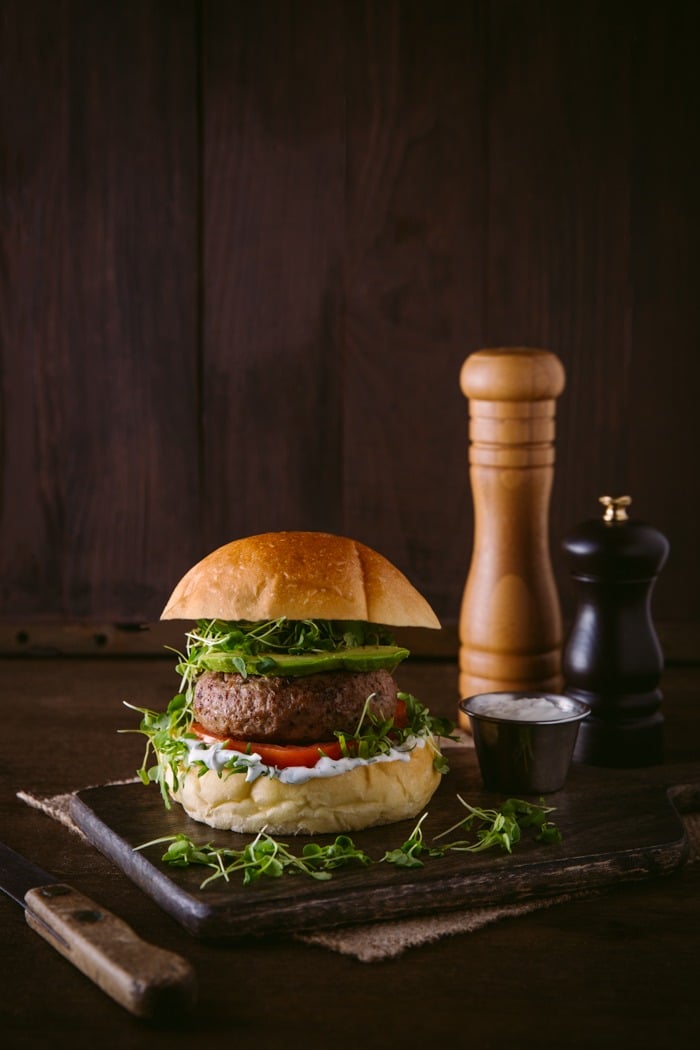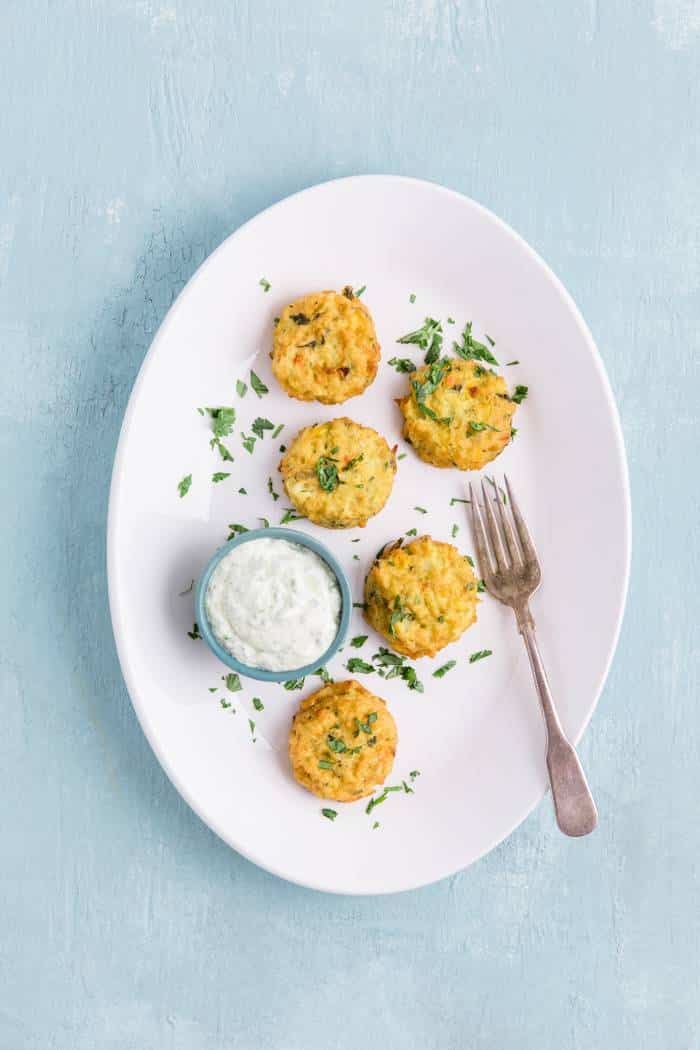Question: What is the best angle for food photography?
Answer: There is no best angle. There is simply the angle that works for the food you’re shooting.
There is no all around “best” angle for food photography. The best angle is always the one that brings out the qualities of your subject. What might work very well for one image, won’t necessarily work for another. Before you pick up your camera, consider the food you’re shooting and decide which camera angle will bring out its best features.
There are three main camera angles used when photographing food: overhead, three-quarters angle, or straight on. Slight variations on these exist, but these are the main ones.
Angles are often talked about in degrees, such as 90-degrees for overhead, 45-degrees for three-quarters view and so on.
Overhead Camera Angle
This is also known as the 90-degree angle. This angle has become more popular lately, largely due to Instagram. It’s a great angle for smart phone photography because camera phones have a very wide angle lens.
Food shot at a three-quarters angle on a phone can appear as if it’s sliding off the table, due to the distortion caused by the lens.
This angle definitely has its pluses. It’s good for fitting several elements into a scene, like in a tablescape. This makes it a great storytelling angle. You can see a variety of props, ingredients, or dishes of food in the frame when you shoot from overhead.
It’s also often easier to compose your shot using this angle than a three-quarters angle or straight-on.
The overhead angle doesn’t work for every type of food shot. It eliminates depth, which gives a more graphic pop to an image but is not suitable for every subject. With the overhead angle, you emphasize the shape of the food and various elements of the scene.
In the image of the corn cakes below, the overhead angle emphasizes their texture and round shape. We can see clearly what kind of dip we eat them with.
We can see a lot of texture in not only the food, but also the background. Texture is a very important element in food photography and the choice of an overhead angle can allow us to utilize it effectively.
This is a minimalist shot with a lot of negative space, but the end result is pleasing to the eye.
The Three-Quarters Angle for Food Photography
This angle is when your camera is placed anywhere from 25 to 75 degrees in relation to your subject.
Typically, the three-quarters angle is the most common angle for commercial food photography. It’s a popular angle because it’s so versatile. You can usually show the front and surface of the dish, as well as the sides.
The 30-degree angle is a variation of the 45-degree angle. The camera angle is slightly lower and allows the viewer to see the background.

The image above is shot at around 75-degrees. You can see the background, but most importantly, you can see what’s in the bowl. The camera is more on top of the food.
When choosing the angle for your food photos, think about what kind of dish you’re serving your food in. For a salad served in a bowl, you want to see deeper into the bowl. This means choosing a 45-degree angle rather than a 30-degree angle.
A mistake new food photographers make is that they often shoot too much bowl, and you can’t see enough of the food inside of it. You always want to showcase the food. You’re selling food, not dishes.

Straight-On Angle
This camera angle is most suitable for “tall” foods, like burgers or stacks of pancakes. It emphasizes the height of a dish. When you’re shooting burgers and sandwiches, the bun or the top piece of bread hides what is inside, so taking the shot from anywhere above the food doesn’t make sense. Remember, the objective is always to focus on the best features of the food.
It bears mentioning here that sometimes you see burger shots where the camera is actually tilted up at the burger. This really emphasizes the height of the burger and makes it look imposing. This is the only instance where this camera angle works. Otherwise, you never want to shoot up at your food.

To sum up, begin by considering the food you are shooting. Does it have layers, like a sandwich? Or is it a flat food, like a pizza? Also, think about where you want the focus to be. My recommendation is that you focus towards the front of the food.
If you’re shooting with your phone, use the overhead or straight-on angle. Avoid taking slanted images. There is a tendency when starting to shoot food photography, to take pictures at an angle. This never looks good and will brand you as an amateur–especially if it looks like the food is about to slide off the table!
The more you shoot and practice food photography, the more intuitive it will become. You’ll learn to easily choose the angle that will best work for the items you are shooting. It can be very helpful to plan things out in advance, but you want to allow some room for creativity too.
28






The photos are beautiful!
Thank you 🙂